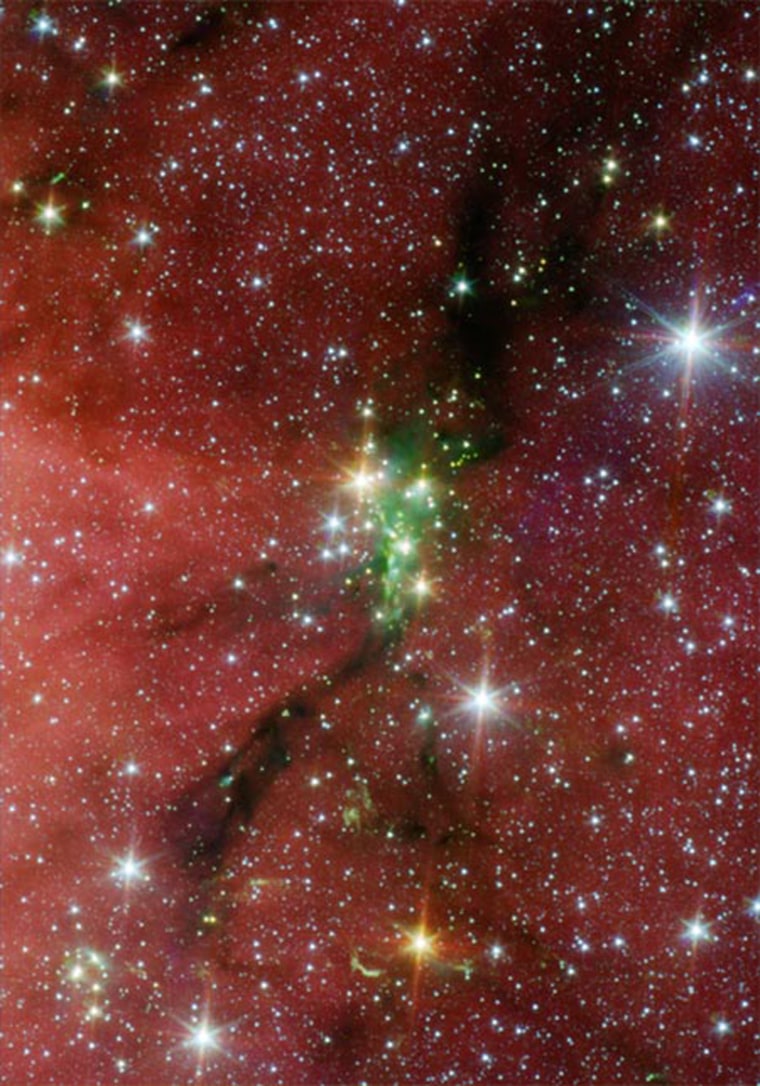Astronomers have spotted a small group of young stellar "siblings" in a dusty stellar nursery 848 light-years away.
The finding, made using NASA's Spitzer Space Telescope, could reveal more clues about the formation of and interactions among cosmic families made up of hundreds of gravitationally bound stars.
"It's amazing how these stars really stand out in the Spitzer images," said study team member Robert Gutermuth of the Harvard-Smithsonian Center for Astrophysics. "At visible wavelengths the stars can't be seen at all; they are completely obscured by the dust in the cloud. This is the first time anyone has ever seen these stars."
The researchers dubbed the newfound cluster "Serpens South" because it is located in the southern portion of the Serpens cloud.
In the Spitzer photograph, the newly discovered Serpens South stars are shown as green, yellow and orange specks, sitting atop a black line that runs through the middle of the image. The "line" is a long, dense patch of cosmic dust and gas, which is currently condensing to form stars. Like raindrops, stars form when thick cosmic clouds collapse.
Tints of green represent hot hydrogen gas. Spitzer can see this hydrogen gas "fingerprint" when the high-speed jets shooting out of the young stars violently collide with cool gas in the surrounding cloud.
Wisps of red in the background are organic molecules called polycyclic aromatic hydrocarbons that are being excited by stellar radiation from a neighboring star-forming region called W40. On Earth, PAHs are found on charred barbecue grills and in sooty automobile exhaust.
For years, astronomers have debated how members of large stellar families, which can contain hundreds of stars, are related. Some astronomers suspect that the stars may be "fraternal siblings" — born at the same time from the same "parent" cloud of gas and dust.
Meanwhile, other scientists suspect that these stellar family members are "adopted" - meaning the stars are born in small batches of a few at a time, and eventually many of these small stellar groups will "bond" to form a massive star cluster, or family.
An upcoming project, called the Gould's Belt Survey, will look at all the star-forming regions within about 1,600 light-years of Earth for evidence about which of these ideas is correct. Combined, these regions comprise a ring of molecular clouds known as Gould's Belt that is associated with young stars.
